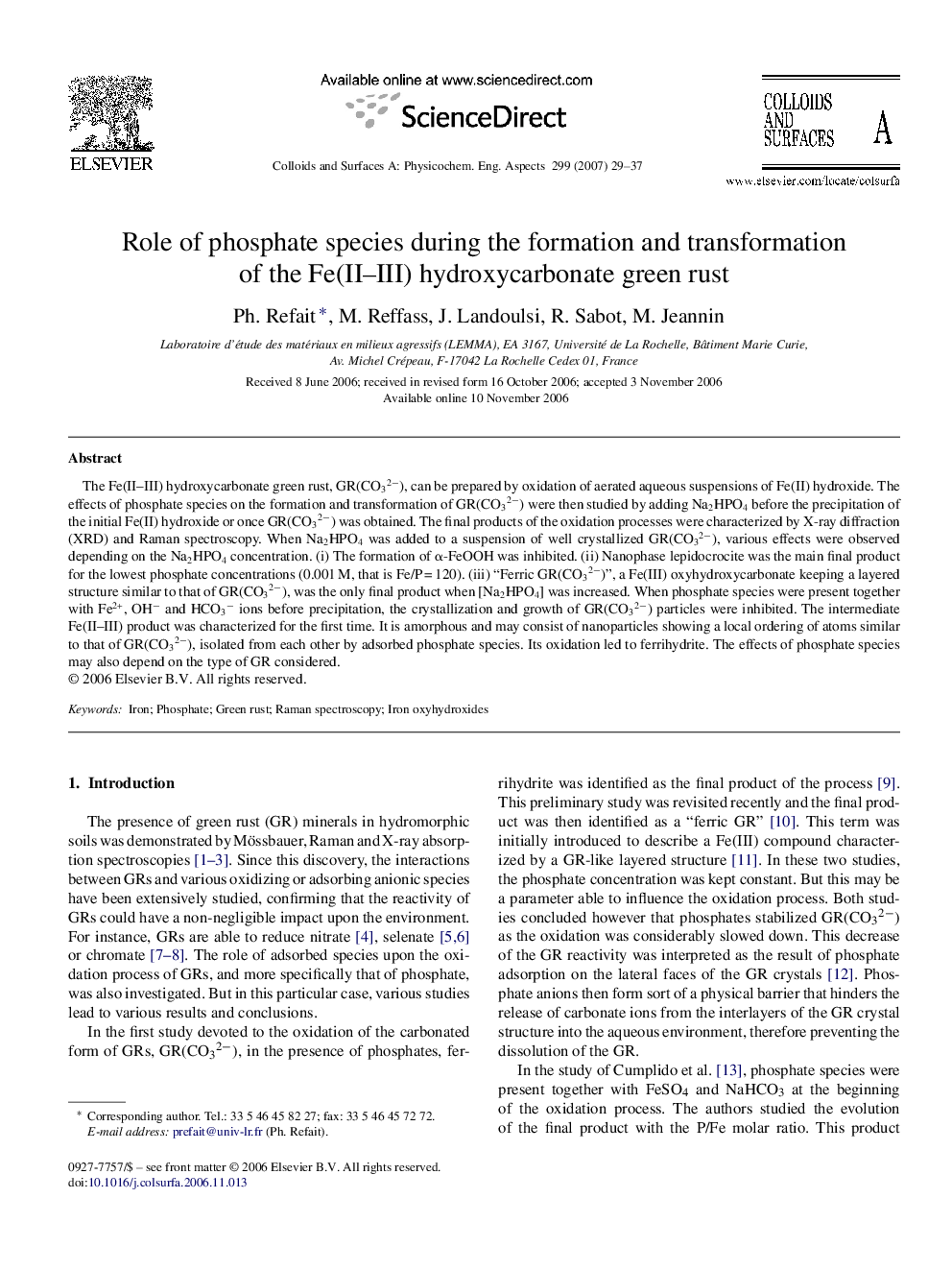| Article ID | Journal | Published Year | Pages | File Type |
|---|---|---|---|---|
| 597662 | Colloids and Surfaces A: Physicochemical and Engineering Aspects | 2007 | 9 Pages |
The Fe(II–III) hydroxycarbonate green rust, GR(CO32−), can be prepared by oxidation of aerated aqueous suspensions of Fe(II) hydroxide. The effects of phosphate species on the formation and transformation of GR(CO32−) were then studied by adding Na2HPO4 before the precipitation of the initial Fe(II) hydroxide or once GR(CO32−) was obtained. The final products of the oxidation processes were characterized by X-ray diffraction (XRD) and Raman spectroscopy. When Na2HPO4 was added to a suspension of well crystallized GR(CO32−), various effects were observed depending on the Na2HPO4 concentration. (i) The formation of α-FeOOH was inhibited. (ii) Nanophase lepidocrocite was the main final product for the lowest phosphate concentrations (0.001 M, that is Fe/P = 120). (iii) “Ferric GR(CO32−)”, a Fe(III) oxyhydroxycarbonate keeping a layered structure similar to that of GR(CO32−), was the only final product when [Na2HPO4] was increased. When phosphate species were present together with Fe2+, OH− and HCO3− ions before precipitation, the crystallization and growth of GR(CO32−) particles were inhibited. The intermediate Fe(II–III) product was characterized for the first time. It is amorphous and may consist of nanoparticles showing a local ordering of atoms similar to that of GR(CO32−), isolated from each other by adsorbed phosphate species. Its oxidation led to ferrihydrite. The effects of phosphate species may also depend on the type of GR considered.
